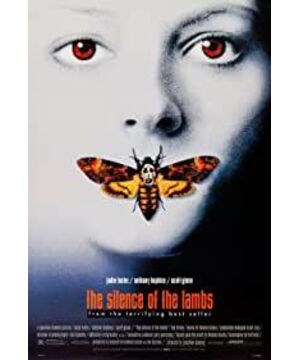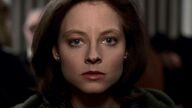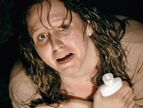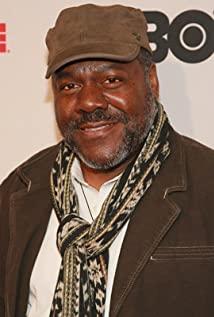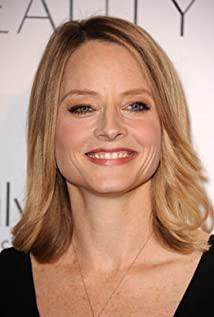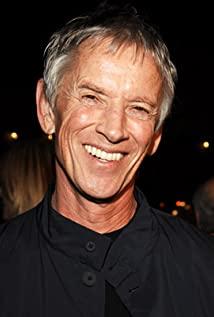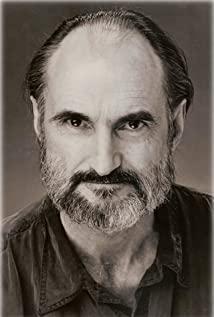The spiral of silence here is not a proprietary communication concept, but just an ordinary biased phrase. Silence means being spoken, that is, consciously or unconsciously losing the right to speak; spiral is a cyclical state.
This article visible public record number Fengying Film Film Festival on a small note (a) "Silence of the Lambs" / Spiral of Silence
"The Silent Lamb" is the favorite film of this year's SIFF , so I tried to make a memento.
The first time I watched "The Silent Lamb" was on New Year's Eve during the winter vacation in early 2016. After taunting the Spring Festival Gala, I didn't feel sleepy until two o'clock, then turned on the computer and prepared to give myself a New Year's gift, and finally shivered with cold in the room at 4 in the morning. The most important and most direct perception at the time was undoubtedly fear. Both the story itself and the creation outside the story accurately portrayed the fear of the oppressed . And the five-stars given without hesitation at the time were naturally more of the most direct aspects: charming character shaping, smooth plot advancement and dripping horror experience . With some other personal favorite elements, such as high feminist colors , such as subtle symbolic relationships . Later, I made some sorting out and felt that the inner model of the film was just a cliché story for the weak and small to overcome fear and build meritorious destiny to change their destiny. However, the effect presented is so vast and secluded, it has to be said to be a huge success.
On June 22nd, the desire to appreciate the big screen was completed at Daguangming. The seats tilted backwards in the front row of Da Guangming seem to pour out the emotions of the characters on the audience, and the big screen forms an aggressive posture with an overwhelming posture-this may also be a correct viewing posture of "The Silent Lamb". All the cramped shots and sharp editing are still fascinating. Even if the final ending is fully known, the passage of night vision is still trembling.
While watching the movie, some new doubts seemed to appear, mixed with the previous potential doubts and refilled in my mind.
The Distinction of "Silence"
I have always felt that the Chinese translation of the film is smooth, but very weird. "The Silence of the Lambs" is completely different from the original English name "The Silence of the Lambs" (I can only understand from the perspective of Chinese if the English language is not good). In the Chinese translation of the name, “silence” will be more understood as the static feature of the lamb . It may be the “silence” among the many “noises”, or the “silence” of the “Lamb” group itself. Such silence, They are all attached to the semantic center of the lamb. In the English film title, "The Silence of the Lamb" is more easily understood as a dynamic meaning , which implies the history of the "screaming" of the Lamb, and implies the transition between the two states. "Silence" is the center of semantics, and it is also the object that needs to be emphasized. There is no doubt that "The Silence of the Lamb" is more in line with the transformation of the characters in the story and the ideological connotation expressed. As for the translation of the name "Silent Lamb", I can only understand it as the remains of the aesthetic habit of the smooth rhyme of sentences in the Chinese classical rhythm.
Another issue is the characterization of the term "silence". "Silence" is different from "quiet" and "composite". It is seldom understood as a positive and open gesture. It points to introversion, closure or even nothingness. The silence of the strong is often the accumulation of power or the manifestation of power; the silence of the weak is almost equivalent to the failure and suppression of discourse. When "silence" is paired with "lamb", the picture of being bitten and swallowed is almost an ending that anyone can imagine from the experience of fairy tales. What the film shows is the transformation of "Lamb" from "screaming" to "silence". "Screaming" represents the fear of life, while "silence" is the way to eliminate it. This kind of interpretation that speaks of tranquility and peace is not impossible, but it is questionable.
The "silence" image
The 2014 Venice Film Festival Jury Prize work, the documentary "The Silent Image" tells the story of the murderer using his power to silence the victim and become a hero. The role of "silence" penetrates every moment of the event, and the characters' words are suppressed under the appearance of silence . In "Lamb", "silence" has also gone through a different imaging process.
The pupa of the skeleton moth has a central position in the film.
First of all, the pupa itself is the silent state in the metamorphosis of the skeleton moth, and what is conceived in the body is a new stage of life-or the extension of life of "death". However, in the film, the moth pupae are embedded in the victim's throat. It seems that after the killer has imposed physical death on the victim, he has embedded a silent spell in his soul to form an illusion of tranquility. At the same time, this external embedding has formed a silent antithesis : the victim cannot speak, and the moth in the pupa cannot break free.
There is also an echo of pupa in the film . When Clarice took the pupa to the entomologist to study and determine the species, the method of identification was presented in a close-up: a utility knife pierced the pupa's head, and thick sap dripped out; the knife cut and peeled off the pupa shell, revealing the skeleton. Contour; and Buffalo Bill's injury to female victims (part of) is also tearing off their skin, and the result is also the death symbolized by the skeleton; and the victim who left a double diamond mark on the back has The meaning of the huge wound left by the broken wings of a skeleton moth.
In the main poster of the film , Clarice's mouth is also obscured by the skeleton moth. The difference is that in the poster, the skeleton moth has metamorphosed into an adult, while Dr. Hannibal's blood red is in Clarice's eyes. In other words, as a symbol of "death", the skeleton moth has the right to extend, but Clarice remains silent, and the doctor becomes a chasing illusion in silence.
The second obvious image of silence is Hannibal's special torture device , which is also a key element for understanding the concept of "silence" in the film. Silence is a shackle imposed on the character by the outside world, not an active choice.
Cannibalism is Dr. Hannibal's way of speaking , and this extremely dangerous language obviously has a deeper symbolic meaning. The recent hot horror film "Raw Eating" depicts "meat eating". Meat-eating is an unconscious brutality, a family inherited nature, an expression of desire to integrate with sex, but it is also a way to resist social discipline and find one's own free attributes. Dr. Hannibal's behavior seems to be understood as above. (I haven't read the prequel) It is difficult to determine whether his cannibalism is the infiltration of his inner nature or the product of the catalysis of social high pressure. And if it’s the latter, then cannibalism is a way to fight against violent machines. It is a way to resist "silence" but fits the desire to kill. "The center of deformity is free , similar to "A Clockwork Orange." Therefore, the special torture instrument is a refined way of governance, trying to obscure the doctor's right to speak.
There are also some silent metaphors in the film based on the appreciator . In traditional concepts, male extroverted, active, and aggressive gender roles are visually related to the prominence of apricot organs; in the same way, the intrusion of female apricot organs corresponds exactly to a cultural attribute of retreat and negative.
In the film, as a biological male, Buffalo Bill fantasizes about his "deserved" gender conversion in social conventions. He clamps the external appreciator into his legs and dances, stretching his arms like a skeleton moth spreading its wings; and his aggressive behavior for the purpose of gender conversion seems to deliberately change the silent nature of this body metaphor. But the problem is that, as Dr. Hannibal analyzed, the subjective motives he said were shaped by society. He just imagined that he should be a woman and indulged in this illusion. This kind of representational speech is actually just a fear of deeper self-digging, so it is undoubtedly still silent.
In another scene, Clarice's movements and demeanor with the penholder seemed to have similar hints . On the one hand, this seems to be understood as a subconscious imitation of the male Xingzheng; on the other hand, it can also be seen as similar to the expression of Jiaohe inserted into the mouth of Sigourney Weaver in the bionic scroll book in "Alien". The above two possible interpretations all point to questioning the actual right to speak during Clarice's investigation.
In addition, the dry well when Catherine was nurtured is also a concrete expression of "collapse" , implying the confinement similar to "silence" and the loneliness and despair in it.
The spiral of "silence"
If the above discussion on the semantics and concrete expression of "silence" can be established, then we can further explore the specific operation of silence from the character's own identity.
The main line and open line of the film is Clarice's process of investigating the case, while the dark line is Clarice's growth, or change of identity: from a top student in school to a distinguished agent. And this is just a fragment of the character directly presented in the film, and Clarice's identity chain is actually incomplete.
Before becoming a top student, Clarice was an orphan who lost her father after losing her mother. Although she is not really the daughter of a miner as described by Dr. Hannibal, the childhood family situation shown in the film does not reveal any constraints. But after the death of her father, she lived with relatives, heard the screaming of a lamb in the middle of the night and fled and grew up alone.
At this time, we no longer need to discuss the real environment of her childhood. Hannibal's psychological analysis of her is undoubtedly correct. The poverty and fear in this lonely environment are enough to determine the identity of the weak at the bottom, and the tall image of her father is always a lingering imprint in her heart. And this childhood mental model gradually grows with the torment of life to develop a yearning for similar spiritual symbols-and the FBI is the highest known representative. And her cheap items, her accent, and other signs of her growth from the country are also difficult to erase-although she is still not humble or overbearing when facing Dr. Hannibal's interrogation, Foster's performance is enough to convey her inner pain.
Like Buffalo Bill, they both have a desire for change. This is basically Clarice, the history of being a "lamb". She herself is a "silent lamb", but her heart is "screaming".
So what is Clarice's identity after becoming famous? Personally, I think this question video has also given the answer.
Among the many superhero movies in Hollywood, the objects saved by the heroes are very similar. The people at the bottom are often the buttons that trigger the hero's supreme morality, and they are also the object of heroes' salvation. The "Silent Lamb", as a similar heroic story model with superb protagonists' ability, is different from what it saves: the upper-class characters. Clarice's attitude towards the person she saves is looking up, not looking down on compassion. At this time, the sense of morality in this action has actually been weakened, but instead provided room for the interpretation of flattery and flattery.
Clarice watched Congressman Ruth's help-seeking video announcement on TV after he first learned of Catherine's kidnapping. She used her usual analytical tone to comment:
She is very smart, and it is very difficult to kill Catherine as a person instead of an object.
But what kind of psychology is behind this sentence? Is it really pure academic analysis?
When Clarice is holding the screaming lamb, is her identity the same as Catherine who is crying and roaring at the bottom of the well, is she equally helpless? But she didn't have the power to prescribe such conditions as "my mother is a magnate." She has lost all of her support.
In the subconscious, is this kind of praise also a kind of self-pity? - the original desperate "me" why others can not save?
And is this kind of rational analysis an encouragement to your unconsciousness today? —— "I" can become such a shrewd and capable person, and I can find a place in this society; "I" is no longer a "lamb", and "I" no longer moans powerlessly.
There is another point in the same paragraph: the news report clearly states that
At present, it is not believed that Zheng Zhi's motive was involved in the kidnapping.
It seems to emphasize the purity of this statement. If we replace this scene into today’s environment, netizens who love interpretation (including myself) will inevitably produce a series of conspiracy-style associations: a woman with the status of a parliamentarian, in the presence of a powerful media, in front of a broad audience , Begging for mercy from a criminal-is this a kind of promotion of the label of "maternal love"? Even if her motives are pure, don't we have the right to doubt the objective moral effect of this behavior? Is it that an ordinary person also has the actual power to convey help videos on TV?
So in Clarice's subconscious mind, besides understanding the sense of justice to save lives, is there a desire for similar power?
Afterwards, Congressman Ruth's real-life portrayal seemed to echo this point. Ruth met Hannibal at the airport. Her hairstyle and clothes, her resolute gestures, and decisive commands all reminded me of Clarice. It’s just that the clothes on her body are a real symbol of the upper class, and the power in her hands is also real and sensible-even when her daughter is at stake, or even if there are many impermanences in fate, power can still be bestowed. Your most direct effect.
So can we make such a guess: Clarice's success after entering the FBI is precisely the status and life of Congressman Ruth. She strives to be independent from the blessing of others, and she becomes a future social elite in the education system. At this moment, her words are only manifested in the so-called academic achievements, and she still needs a more direct way to speak. She needs some kind of restless "screaming" way to reach a higher position-"silence" for stability.
At the same time, what we cannot ignore is another image of the father in the film, Crawford . Dr. Hannibal once questioned the incestuous relationship between Crawford and Clarice. We can easily see from the film Crawford's efforts to cultivate Clarice. This will inevitably allow Clarice to develop a fusion of caring for his father in childhood. This accommodating emotion has grown further, and the image of "father" in Clarice's heart has been transplanted. Crawford is not only a role that can bless Clarice, but also an external image that Clarice aspires to be. And these two identities also have a game relationship in Clarice's mind.
In the end, Crawford asked Clarice to investigate other information when assigning the task instead of following him to catch the murderer. Crawford also specifically emphasized Clarice's contribution to the arrest, which can be seen as a kind of encouragement or comfort from the "father" to the daughter-and comfort often does not lead to the division of results. But in the circumstances at that time, Clarice was infinitely close to the truth. Her desire to become a "father" in her heart was already swelling, but she was still helpless to order the task.
The deceptive parallel editing before the final paragraph of the film just hints at this dual identity counterpoint. Therefore, when Clarice faced Buffalo Bill, whether it was based on objective conditions or subjective will, she couldn’t look back to find a rescuer— she needed to use this battle to climb the one that could “silence” without harming herself. Position, thus becoming the master of this elite cohort. And this life-and-death contest is her only way of "screaming".
After sorting out in this way, it is not difficult to see that by putting together Clarice's history and the following, her role transition in this story is even more obvious.
Clarice was originally a small figure at the bottom of the civil society. Her destiny is in the dominated "silence"; and she needs to change her position in some way, and the only way is to follow the path of intellectual elite growth and strive to become more A member of the upper-class society, and gradually use her strength to occupy its due position in this interest system; on this climbing road, her way of success is to rescue the descendants of the upper-class elites, and the blessing she longs for also comes from the society. Upper level; in the end, she became a part of it. She didn't shake the social system at all, but just became a part of them according to their rules.
This seems to be a kind of self-promotion and female self-reliance, but on the other hand, it can be completely understood as the self's unconscious recognition of external regulations and the subconscious that blends into it. Clarice's change from the bottom to the upper middle is just a process from a kind of helpless aphasia to another alternative "silence".
The rules of the game of the social elite finally eliminated the possibility of self-construction at the bottom. One kind of discourse power swallowed another kind of discourse power, and finally formed this silent spiral.
The above interpretation may just be my own obscenity. However, the objective problem that can be reflected is the relationship between swallowing up and concealing the right to speak between different social classes. Among the gaps between classes, this "silence" and "screaming" seem to be contradictory, but in fact they lead to the only conclusion.
Does the "silence" of the "Lamb" join the queue of the "Tiger" or construct the equal status of the "Lamb" itself?
Our ups and downs in life, aphasia from one link to another, or an attempt to construct a true self-discourse?
Even jumping out, is my own comment just a meaningless imitation of the identity of an "intellectual"?
These are still uncertain. The movie can't and doesn't need to give me an answer. It chooses to present it openly, which is the greatest sincerity.
May there be "The Silent Lamb" forever in the world, and may you and I no longer be the "Silent Lamb".
View more about The Silence of the Lambs reviews


